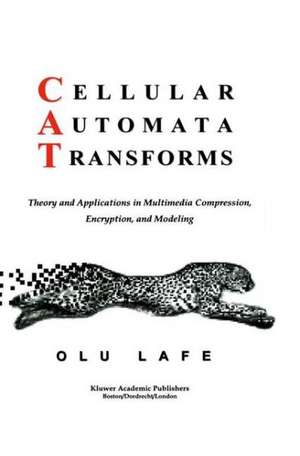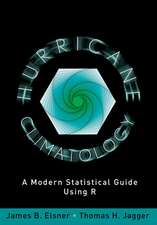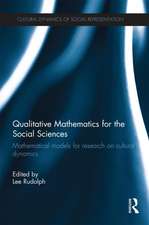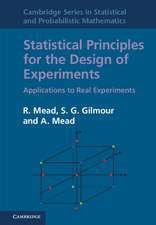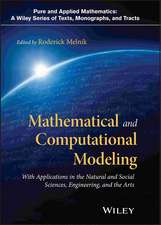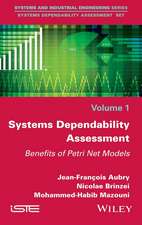Cellular Automata Transforms: Theory and Applications in Multimedia Compression, Encryption, and Modeling: Multimedia Systems and Applications, cartea 16
Autor Olurinde Lafeen Limba Engleză Paperback – 21 noi 2012
Cellular Automata Transforms is divided into two parts. In Part I the fundamentals of cellular automata, including the history and traditional applications are outlined. The challenges faced in using CA to solve practical problems are described. The basic theory behind Cellular Automata Transforms (CAT) is developed in this part of the book. Techniques by which the evolving states of a cellular automaton can be converted into information building blocks are taught. The methods (including fast convolutions) by which forward and inverse transforms of any data can be achieved are also presented.
Part II contains a description of applications of CAT. Chapter 4 describes digital image compression, audio compression and synthetic audio generation, three approaches for compressing video data. Chapter 5 contains both symmetric and public-key implementation of CAT encryption. Possible methods of attack are also outlined. Chapter 6 looks at process modeling by solving differential and integral equations. Examples are drawn from physics and fluid dynamics.
| Toate formatele și edițiile | Preț | Express |
|---|---|---|
| Paperback (1) | 981.89 lei 6-8 săpt. | |
| Springer Us – 21 noi 2012 | 981.89 lei 6-8 săpt. | |
| Hardback (1) | 989.64 lei 6-8 săpt. | |
| Springer Us – 31 aug 2000 | 989.64 lei 6-8 săpt. |
Din seria Multimedia Systems and Applications
- 20%
 Preț: 649.09 lei
Preț: 649.09 lei - 20%
 Preț: 651.89 lei
Preț: 651.89 lei - 20%
 Preț: 328.27 lei
Preț: 328.27 lei - 20%
 Preț: 651.23 lei
Preț: 651.23 lei - 20%
 Preț: 642.98 lei
Preț: 642.98 lei - 20%
 Preț: 994.58 lei
Preț: 994.58 lei - 20%
 Preț: 613.00 lei
Preț: 613.00 lei - 20%
 Preț: 650.40 lei
Preț: 650.40 lei - 15%
 Preț: 638.76 lei
Preț: 638.76 lei - 20%
 Preț: 636.73 lei
Preț: 636.73 lei - 20%
 Preț: 995.09 lei
Preț: 995.09 lei - 20%
 Preț: 1277.57 lei
Preț: 1277.57 lei - 20%
 Preț: 988.81 lei
Preț: 988.81 lei - 20%
 Preț: 643.17 lei
Preț: 643.17 lei - 20%
 Preț: 645.14 lei
Preț: 645.14 lei - 20%
 Preț: 989.96 lei
Preț: 989.96 lei - 20%
 Preț: 645.65 lei
Preț: 645.65 lei - 15%
 Preț: 640.71 lei
Preț: 640.71 lei - 18%
 Preț: 953.03 lei
Preț: 953.03 lei - 20%
 Preț: 652.73 lei
Preț: 652.73 lei - 20%
 Preț: 652.73 lei
Preț: 652.73 lei - 18%
 Preț: 955.25 lei
Preț: 955.25 lei - 18%
 Preț: 959.98 lei
Preț: 959.98 lei - 20%
 Preț: 996.56 lei
Preț: 996.56 lei - 20%
 Preț: 978.21 lei
Preț: 978.21 lei
Preț: 981.89 lei
Preț vechi: 1227.36 lei
-20% Nou
Puncte Express: 1473
Preț estimativ în valută:
187.91€ • 195.45$ • 155.13£
187.91€ • 195.45$ • 155.13£
Carte tipărită la comandă
Livrare economică 15-29 aprilie
Preluare comenzi: 021 569.72.76
Specificații
ISBN-13: 9781461369622
ISBN-10: 1461369622
Pagini: 192
Ilustrații: XII, 177 p.
Dimensiuni: 155 x 235 x 10 mm
Greutate: 0.28 kg
Ediția:Softcover reprint of the original 1st ed. 2000
Editura: Springer Us
Colecția Springer
Seria Multimedia Systems and Applications
Locul publicării:New York, NY, United States
ISBN-10: 1461369622
Pagini: 192
Ilustrații: XII, 177 p.
Dimensiuni: 155 x 235 x 10 mm
Greutate: 0.28 kg
Ediția:Softcover reprint of the original 1st ed. 2000
Editura: Springer Us
Colecția Springer
Seria Multimedia Systems and Applications
Locul publicării:New York, NY, United States
Public țintă
ResearchCuprins
1 Introduction.- 1.1 What are Cellular Automata?.- 1.2 History of Cellular Automata.- 1.3 Multi-State CA Example.- 1.4 Cellular Automata Models.- 1.5 Challenges in Conventional CA Modeling.- 1.6 Cellular Automata Transforms.- 1.7 Potential Applications of CAT.- 2 Cellular Automata Transforms.- 2.1 Nomenclature.- 2.2 Cellular Automata Transform Bases.- 2.3 Important Keys in CA Transforms.- 2.4 Non-Overlapping and Overlapping CAT Filters.- 2.5 CAT Sub-Band Coding.- 2.6 Smoothness of Sub-Band CA Basis Functions.- 3 Cellular Automata Bases.- 3.1 Dual-Coefficient Basis Functions.- 3.2 Multi-Coefficient CA Basis Functions.- 3.3 S-Bases.- 4 Multimedia Compression.- 4.1 Introduction.- 4.2 Encoding Strategy.- 4.3 Digital Image Compression.- 4.4 Audio Compression.- 4.5 Video Compression.- 4.6 Concluding Remarks.- 5 Data Encryption.- 5.1 Introduction.- 5.2 Approach I.- 5.3 Approach II.- 5.4 Concluding Remarks.- 6 Solution of Differential and Integral Equations.- 6.1 Introduction.- 6.2 Traditional Cellular Automata Modeling.- 6.3 CA Transform Approach.- 6.4 Integral Equations.
